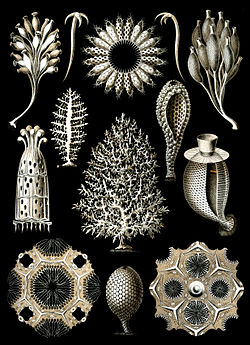| Sycon elegans | |
|---|---|
 | |
| bottom left of the picture: Sycarium elegans (Haeckel) = Sycon elegans (Bowerbank, 1845), lengthwise section of body wall | |
| Scientific classification | |
| Domain: | Eukaryota |
| Kingdom: | Animalia |
| Phylum: | Porifera |
| Class: | Calcarea |
| Order: | Leucosolenida |
| Family: | Sycettidae |
| Genus: | Sycon |
| Species: | S. elegans |
| Binomial name | |
| Sycon elegans (Bowerbank, 1845) | |
| Synonyms | |
| |
Sycon elegans is a species of calcareous sponges belonging to the family Sycettidae. [1]